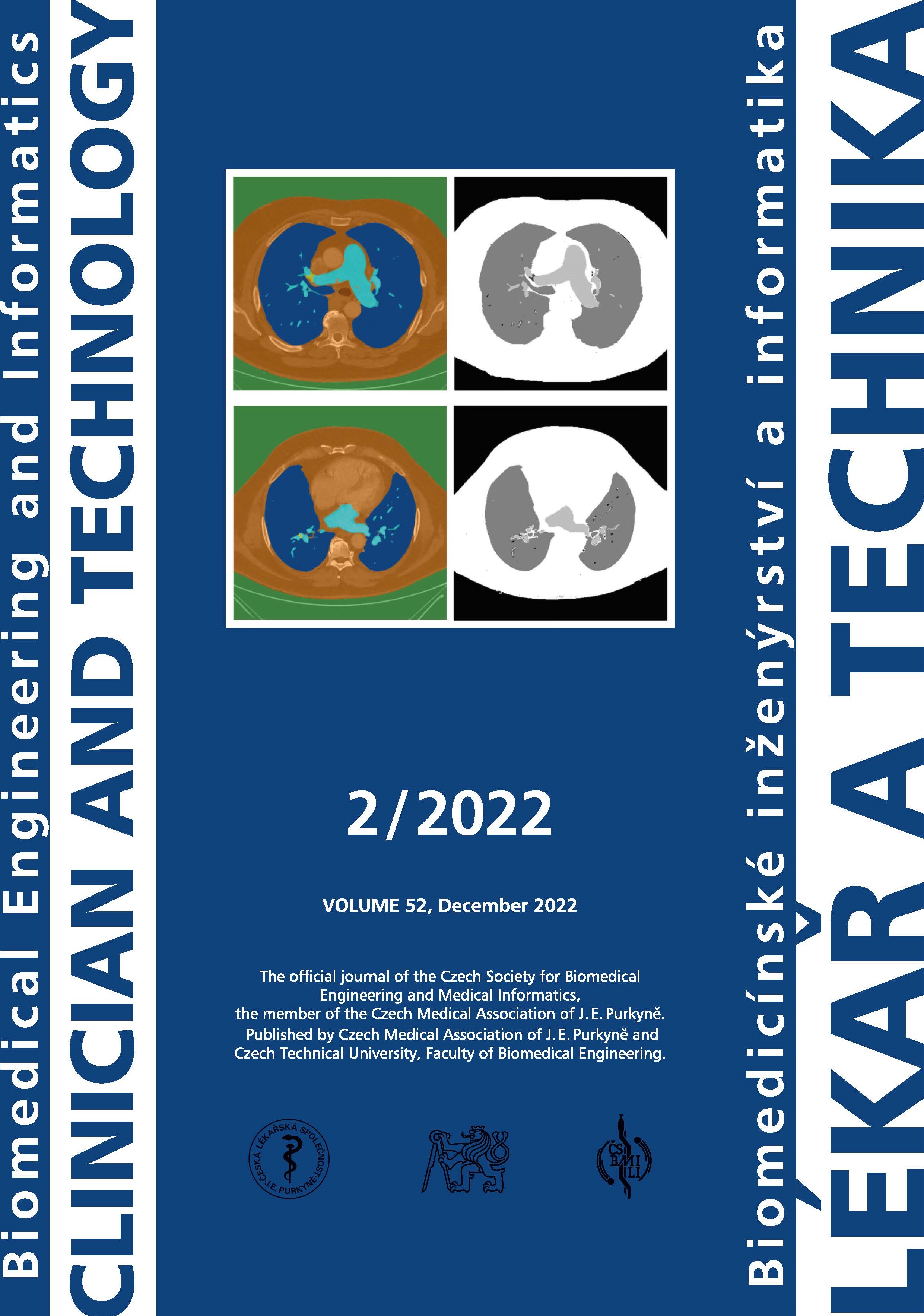SEMIAUTOMATIC DETECTION OF STENOSIS AND OCCLUSION OF PULMONARY ARTERIES FOR PATIENTS WITH CHRONIC THROMBOEMBOLIC PULMONARY HYPERTENSION
DOI:
https://doi.org/10.14311/CTJ.2022.2.04Abstract
Chronic thromboembolic pulmonary hypertension (CTEPH) is a severe lung disease defined by the presence of chronic blood clots in the pulmonary arteries accompanied by severe health complications. It is necessary to go through a large set of axial sections from Computed tomography pulmonary angiogram (CTPA) for diagnosing the disease, which is difficult and time consuming for the radiologist. The radiologist's experience plays a significant role, same as subjective factors such as attention and fatigue. In this work we pursued the design and development of the algorithm for semiautomatic detection of pulmonary artery stenoses and clots for diagnosing CTEPH, which is based on the implementation of semantic segmentation using deep convolutional neural networks. Specifically, it is about the use of the DeepLab V3 + model embedded in the Xception architecture. Within this work we focused on stenoses and clots located in larger pulmonary arteries. Anonymized data of patients diagnosed with CTEPH and one healthy patient in the term of the presence of the disease were used for realization of this work. Statistical analysis of the results is divided into two parts: analysis of the created algorithm based on comparison of outputs with ground truth data (manually marked references) and analysis of pathology detection on new data based on comparison of predictions with reference images from the radiologist. The proposed algorithm correctly detects present vascular pathology in 83% of cases (sensitivity) and precisely selects cases where the investigated pathology does not occur in 72% of cases (specificity). The calculated Matthews correlation coefficient is 0.53. This means that the predictive ability of the algorithm is moderate positive. The designed and developed image analysis algorithm offers the radiologist a "second opinion" and it also could enable to increase the sensitivity of CTEPH diagnostics in cooperation with a radiologist.
Downloads
Published
Issue
Section
License
Copyright (c) 2023 Evgeniia Mardanshina, Vladimír Černý, Jiří Hozman

This work is licensed under a Creative Commons Attribution 4.0 International License.
Authors who publish with this journal agree to the following terms:
- Authors retain copyright and grant the journal right of the first publication with the work simultaneously licensed under a Creative Commons Attribution License (https://creativecommons.org/licenses/by/4.0/) that allows others to share the work with an acknowledgment of the work's authorship and initial publication in CTJ.
- Authors are able to enter into separate, additional contractual arrangements for the non-exclusive distribution of the journal’s published version of the work (e.g., post it to an institutional repository or publish it in a book), with an acknowledgment of its initial publication in this journal.
- Authors are permitted and encouraged to post their work online (e.g., in institutional repositories or on their website or ResearchGate) prior to and during the submission process, as it can lead to productive exchanges.
CTJ requires that all of the content of the manuscript has been created by its respective authors or that permission to use a copyrighted material has been obtained by the authors before submitting the manuscript to CTJ. CTJ requires that authors have not used any copyrighted material illegally, as for example a picture from another journal or book, a photo, etc. It is the author’s responsibility to use only materials not violating the copyright law. When in doubt, CTJ may ask the authors to supply the pertinent permission or agreement about the use of a copyrighted material.
The opinions expressed in CTJ articles are those of authors and do not necessarily reflect the views of the publishers or the Czech Society for Biomedical Engineering and Medical Informatics.


